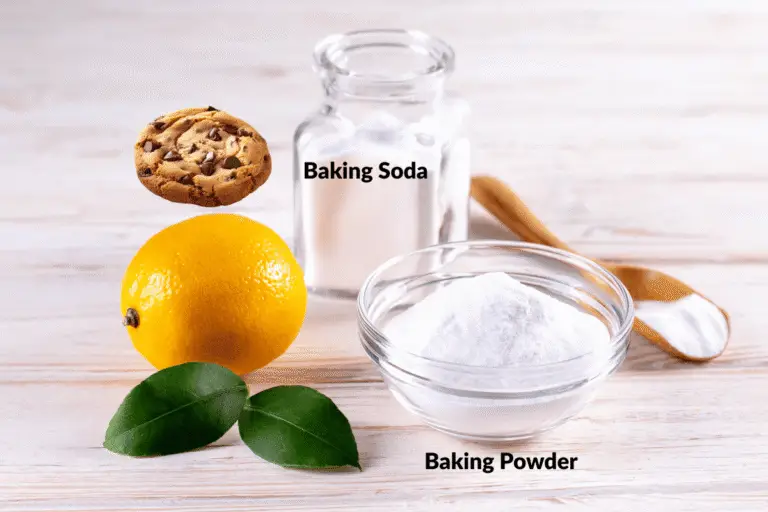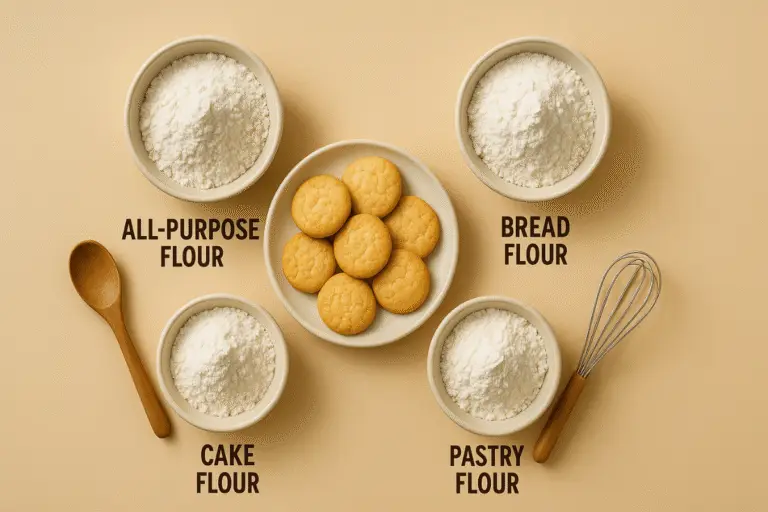Why Are My Cookies Too Crispy? (Here’s How to Fix Them)

🍪 You start baking cookies: you weigh the ingredients, mix them carefully, and pop them in the oven. But when you finally take a bite, you wonder—why are my cookies too crispy?
Don’t worry! This is a common problem that even experienced bakers face. In professional baking, we’ve often seen cookies turn overly crisp due to variations in sugar type, butter consistency, and small changes in baking time or oven temperature.
✅ The good news? You can achieve soft, perfectly textured cookies by:
- Choosing the right sugar and flour
- Maintaining proper dough consistency
- And keeping a close eye on baking time and temperature
In this post, we’ll explore all the common reasons why cookies become too crispy and share easy fixes to get soft, delicious cookies every time.
Common Reasons Why Are My Cookies Too Crispy
So why do cookies end up overly crispy and even a little too hard sometimes? Let’s break down the most common reasons and what you can do to fix them.
1. Ingredient Choice
When baking cookies, it’s important to keep the right balance of ingredients in mind. For example, if you swap butter with margarine, you might get a tough, hard dough. Even using too little butter can cause the same problem because fat plays a key role in keeping cookies moist and tender.
👉 For soft, melt-in-your-mouth cookies, make sure the dough has enough fat to lock in moisture. A slightly higher butter content creates a smoother dough and results in soft, chewy cookies instead of dry and crispy ones.
💡 Pro Tip: In commercial baking, we often use shortening instead of butter or margarine because it’s more cost-effective and helps achieve a consistent texture.
2. Using Too Much Sugar
As we discussed in our basic cookie ingredients guide, every ingredient has its own function in baking. When you put your cookies in the oven, sugar melts and caramelizes—giving that beautiful golden-brown color and signature cookie texture.
But here’s the thing: too much sugar can cause cookies to melt too quickly and spread thin. This often leads to a crispier texture or even makes them slightly chewy, instead of soft and crumbly.
💡 Pro Tip: In professional bakeries, we use sugar in milled form (powdered). It requires a smaller quantity and allows fat to coat the sugar particles, creating softer textured cookies.

3. Thin Dough or Over-Spreading
After choosing the right ingredients, the next factor that can make your cookies overly crispy is dough consistency and shaping.
During mixing, it’s important to maintain the right dough consistency—not too soft and not too hard. If your dough feels too firm, it likely means there isn’t enough butter or liquid, which can make it dry out faster during baking. The result? Cookies with a dry and crispy texture instead of soft, tender centers.
Another issue is dough piece shaping. If you roll or form your cookie dough pieces too thin, they’ll bake and dry out more quickly, especially around the edges. This often leads to crispy, hard cookies instead of the soft and chewy ones you’re aiming for.
👉 Related: Why Do My Cookies Spread Too Much?
4. High Oven Temperature
Your oven temperature also plays a critical role in how your cookies turn out.
If you start with too high a temperature, the cookie’s outer structure sets too quickly before the interior has a chance to build its ideal texture. On the other hand, if the temperature is too low, the cookies take longer to bake, allowing more moisture to evaporate—which leaves you with dry, overly crispy cookies.
Also, keep an eye on how heat is distributed. Giving more heat from the bottom can create a crusty base, which contributes to a crispy texture throughout. For balanced baking, always check that heat is even from top and bottom in your oven.
The heat from the bottom of the oven is crucial for texture and color, but it’s also where things can go wrong. Many bakers struggle with this issue, so I’ve created a complete guide that explains exactly why cookies burn on the bottom and how to prevent it.

Quick Fixes to Avoid Overly Crispy Cookies Next Time
In the previous section we discussed detailed reasons why are my cookies crispy. Don’t worry—you can make a few simple adjustments to your recipe and process to achieve that perfect soft, chewy texture.
1. Adjusting Your Ingredient Ratios
The first step to softer cookies is tweaking your recipe slightly:
- Increase butter by 5% and reduce sugar by 5%. This little change will help lock in moisture and give cookies a softer bite.
- Try adding one extra egg yolk for richness and improved texture.
- Use flour with low gluten content (like cake flour) for tender cookies.
- To achieve a softer dough consistency, you can also add a little more water or other liquid ingredients.
💡 In professional baking, we always use a balanced recipe to deliver the desired texture, shape, and flavor every single time.
2. Proper Dough Shaping
If you want soft cookies, shaping the dough correctly is just as important as the ingredients:
- Shape the dough pieces as soon as possible. Leaving cookie dough exposed to air for too long causes it to dry out, which later results in dry and crispy cookies. Try to shape all pieces within 10 to 15 minutes of preparing the dough.
- Ensure cookies are shaped evenly from center to edges. Uneven shapes often bake unevenly, leaving edges dry and crispy while the center remains soft.
💡 Tip: Use a cookie cutter or metal dies to get uniform shapes every time.
👉 Related: Cookie Baking Tools for Beginners
In commercial bakeries, we pay close attention to batch running times too—keeping them within 10–15 minutes ensures consistent results.

3. Oven Temperature and Baking Time
Your oven temperature and baking time are critical for keeping cookies soft and perfectly textured.
👉 Always preheat your oven before placing the cookie tray inside. Starting with the right heat ensures your cookies bake evenly.
For best results:
- Set the top heat slightly higher than the bottom heat (keep the bottom about 20°C lower).
- Use butter paper and a non-stick baking tray to prevent over-browning on the bottom.
- Keep the oven temperature between 190°C and 200°C for most cookie recipes.
⏱ Don’t bake cookies too long. Overbaking removes too much moisture, leaving cookies dry and overly crispy. Aim to retain 3–4% moisture in your final cookies for a soft, tender bite.
💡 In bakeries, we closely monitor baking time and temperature to achieve consistent softness in every batch.

Final Thoughts About Crispy Cookies
Crispy cookies can be delicious if that’s what you’re aiming for—but when you want soft, tender, melt-in-your-mouth cookies, it’s frustrating to see them come out hard and dry. The good news? With just a few small adjustments to your ingredient ratios, dough handling, and oven settings, you can easily avoid this issue.
As we’ve discussed, factors like using the right type of fat, balancing sugar levels, and keeping an eye on baking time all play a critical role. Even in professional bakeries, we constantly test and tweak recipes to get the perfect texture every time.
✅ Remember, baking is both a science and an art. Start with these tips, and you’ll soon master the balance between soft centers and delicate edges.
👉 Related: Cookie Baking Mistakes You Might Be Making
👉 Looking for more baking tips? Visit King Arthur Baking’s Cookie Tips for professional insights too.




